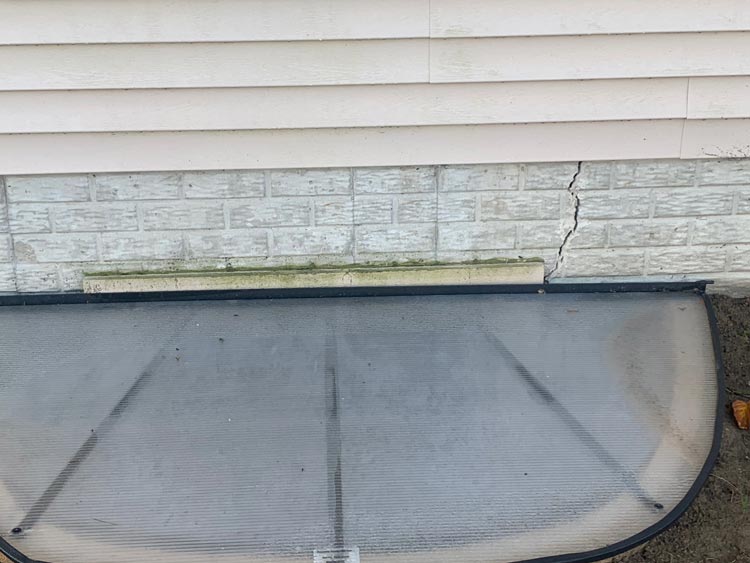Did you know? Despite their age, pier and beam foundations remain popular for many homeowners today. This foundation relies on vertical piers dug deep into the ground, supporting wooden beams that hold the house. But what makes it so advantageous? The pier and beam foundation is incredibly resilient to soil movement, preventing structural damage.
Moreover, it offers exceptional ventilation and insulation, making it an energy-efficient option. No wonder many homeowners stick with this historic foundation method! This blog will discuss some common facts about pier and beam foundations.
Components of Pier and Beam Foundation
Pier and beam foundations have concrete piers supporting a building or structure. The docks are typically placed at regular intervals across the foundation, with beams spanning between them to create a sturdy framework.
In this type of foundation, the components are highly variable to meet the needs of different kinds of buildings. There are several key elements to consider:
Piers
Piers supports the majority of the load on foundations. Building requirements determine the size and shape of these structures, which usually consist of concrete.
Beams
The beams provide a building’s foundation, the connecting elements between the piers. Several types of beams include small joists, large beams, and multi-span beams.
Subfloor
Finished floors are constructed by placing a material layer over the beams and providing a level surface. Construction materials include plywood, particle board, and concrete.
Joists
They support the subfloor, and they carry the building’s weight. It is usually made from steel or timber, as both materials can support different loads.
Footings
Piers may require additional footings in some cases. In most cases, concrete slabs are shallowly spread or deeply drilled.
Foundations with Piers and Beams: Advantages and Disadvantages
Considering the pros and cons of pier and beam foundations is important before deciding. Pier and beam foundations have the following pros and cons:
Pros:
- Easy to repair— Compared to other types of foundations, this one is easier to maintain. In the event of foundation problems such as settling, it is necessary to repair the piers and beams.
- Better ventilation— The pier and beam foundation allows for improved ventilation and air circulation, preventing mold and mildew from developing in the crawl space.
- More flexibility— Pier and beam foundations offer more flexibility than other types of foundations, which means they can easily adapt to changes in the soil, temperature, and moisture content.
- Accessible utilities— Plumbing and electrical systems can be easily accessed and repaired using a pier and beam foundation.
- Durable— The pier and beam foundation can last many years if properly maintained and repaired.
Cons:
- Higher cost— Pier and beam foundations are generally more expensive than other types due to the number of piers and beams required.
- Susceptible to pests— The pier and beam foundation crawl space can attract pests such as rodents and insects, damaging the structure and leading to infestations.
- Potential for moisture problems— The crawl space of the pier and beam foundation can also be susceptible to moisture problems, leading to mold, mildew, and rot.
- Limited insulation— Pier and beam foundations may require additional insulation to prevent heat loss and draft issues, which can add to the overall cost of the structure.
- Less stable— Pier and beam foundations can be less durable than others, especially in areas with high winds or seismic activity.
Common Problems with Pier and Beam Foundation
Here are some common problems with a pier and beam foundation:
Moisture Damage
One of the biggest problems with pier and beam foundations is moisture damage. Because this type of foundation rises off the ground, it is susceptible to moisture damage from flooding or heavy rainfall. The wooden beams that support the foundation can also rot if exposed to moisture for a prolonged time.
Sagging or Uneven Floors
Sagging or uneven floors are another common problem with pier and beam foundations. Over time, the wooden beams that support the foundation can warp or rot, causing the floors to sag or become uneven. The settling or shifting of the piers can also cause this.
Poor Ventilation
Another common problem with pier and beam foundations is poor ventilation. A lack of ventilation can cause moisture to build up, rotting or warping the wooden beams that support the foundation.
Cracked Piers
Cracked piers are another problem with pier and beam foundations. This issue can happen if the soil beneath the foundation shifts, causing the piers to break or become unstable.
Insect Infestation
Because the pier and beam foundation involve wooden beams, insect infestation is likely. Termites, in particular, can pose a problem and cause significant damage if not addressed quickly.
Maintenance and Repair of Pier and Beam Foundation
Like any other foundation type, the pier and beam foundation also requires care and maintenance to maintain it properly.
Tips to Maintain a Pier and Beam Foundation:
- Regular Inspection—They are the most effective way to prevent foundation damage. Inspecting the foundation at least twice a year is recommended to detect structural flaws, moisture problems, and pest infestation.
- Check Moisture Problems—The pier and beam foundation are wood-based and moisture-resistant. Excessive moisture can cause the foundation to rot and decay, compromising its structural stability. Regularly check for leaks or standing water around the foundation and ensure proper drainage.
- Keep it clean—Sweep leaves, debris, and other materials from the foundation to prevent obstructing airflow. This maintenance enables proper ventilation under the foundation that minimizes moisture buildup.
- Prevent Pest Infestations—Termites and other pests can significantly threaten structures built on a pier and beam foundation. Regular termite inspections, pest control measures, and sealing visible entry points can prevent pest infestations.
Tips to Repair the Pier and Beam Foundation:
Despite proper maintenance, pier and beam foundations experience problems requiring repairs or adjustments. Below are some repairs:
- Re-leveling the foundation—Over time, the pier and beam foundation can settle, leading to uneven floors and other structural issues. Re-leveling involves lifting the fixed part of the foundation with hydraulic jacks and securing it in place using steel shims or other materials.
- Added Support Beams and Piers—Sometimes, a foundation may need extra vertical support to prevent further settling or sagging. Engineers suggest adding new piers and beams to reinforce the foundation in such cases.
- Repairing Structural Damage—Structural damage, such as broken or sagging beams, requires immediate attention. Replacing or repairing the damaged foundation structural components is crucial to avoid further damage.
Conclusion
Pier and beam foundations offer a solid alternative to traditional slab foundations. While pier and beam foundations may not be ideal for all scenarios, they can provide a more stable foundation in areas with unstable soil or homes with specific design requirements. Understanding the pros and cons of pier and beam foundations is crucial to making an informed decision about whether or not this is the right foundation for your home. Regular maintenance and foundation repair work can prevent costly damage caused by foundation settlement or moisture damage. With the right care, a pier and beam foundation can provide a strong and stable base for your home for many years.





